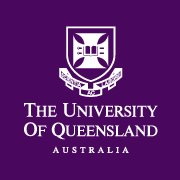Full description
The existing data collection largely revolves around the premier model to understand the evolution of animals and their symbionts – the tropical Great Barrier Reef demosponge Amphimedon queenslandica - but increasingly includes other genome and transcriptome projects with basic, strategic and applied research outcomes (e.g. the pearl oyster Pinctada maxima and the pest Crown-of-Thorns starfish Acanthaster planci).The addition of other marine genomes and transcriptomes (e.g. Pinctada maxima and Acanthaster planci) into this data collection enable collaborations with local universities and institutes and with Australian industry partners, in addition to a large diversity of international partners. Each of these interactions provide unique platforms to expand the use of genomic information in marine science, particularly in tropical Australia.Genomic data and resources, including (i) draft genome annotated assemblies, (ii) associated annotated metagenome assemblies, (iii) developmental and tissue-restricted transcriptomes and other RNA-Seq data, (iv) ChIP-Seq and other maps of transcriptional regulatory regions, (v) chromatin states, and (vi) peptidomes, for Amphimedon queenslandica and other marine sponges, Pinctada maxima and other marine molluscs, and other Great Barrier Reef invertebrates, including Acanthaster planci.Issued: 2013
User Contributed Tags
Login to tag this record with meaningful keywords to make it easier to discover
Deep developmental transcriptome sequencing uncovers numerous new genes and enhances gene annotation in the sponge Amphimedon queenslandica
local : UQ:360787
Fernandez-Valverde, Selene L., Calcino, Andrew D. and Degnan, Bernard M. (2015). Deep developmental transcriptome sequencing uncovers numerous new genes and enhances gene annotation in the sponge Amphimedon queenslandica. BMC Genomics, 16 (1) 387, 1-11. doi: 10.1186/s12864-015-1588-z
Transcriptome profiling of the demosponge Amphimedon queenslandica reveals genome-wide events that accompany major life cycle transitions
local : UQ:284185
Conaco, Cecilia, Neveu, Pierre, Zhou, Hongjun, Arcila, Mary L., Degnan, Sandie M., Degnan, Bernard M. and Kosik, Kenneth S. (2012). Transcriptome profiling of the demosponge Amphimedon queenslandica reveals genome-wide events that accompany major life cycle transitions. BMC Genomics, 13 (1) 209, 209.1-209.19. doi: 10.1186/1471-2164-13-209
Research Computing Centre (RCC) Datasets
local : UQ:5d1d4fb
Research Data Collections
local : UQ:289097
- DOI : 10.48610/9E2E4BC



